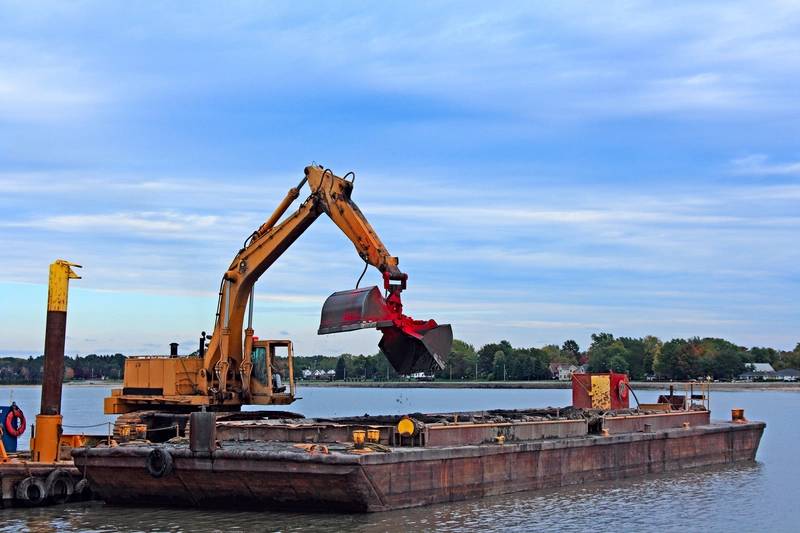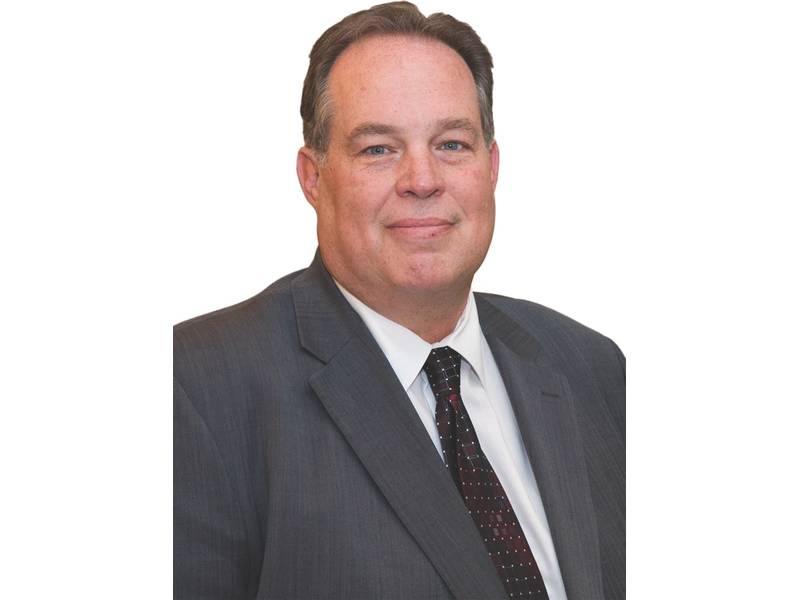Dredging: Digging Deep for a 'WIIN'
In the waning days of 2016, the outlook brightened dramatically for the big U.S. dredging contractors. Just before Congress dispersed for the Holidays, then-President Obama signed a pivotal piece of legislation – the Water Infrastructure Improvements for the Nation (WIIN) Act, S612. Key aspects of the bill:
- Authorized needed investment in America’s ports, channels, locks, dams, and other infrastructure that supports the maritime and waterways transportation system and provides flood protection.
- Authorized U.S. Army Corps of Engineers (USACE) Chief’s Reports received since previous legislation (WRRDA 2014); Chief’s Reports are the final recommendations to Congress by the Corps’ Chief of Engineers for water resources infrastructure investment. (These infrastructure improvements have been proposed at the local level, in cooperation and consultation with the Corps, and have national economic and environmental benefits).
- Accelerated and broadens reforms for infrastructure project permit processing, and
- Cut red tape by requiring timely approvals for non-federal modifications to Corps of Engineers projects.
The harbor deepening authorized by WIIN includes marquee projects at Port Everglades (with a Federal contribution of $229.8 million) and Charleston, SC (with $231.2 million Federal cost). Hence, for the domestic dredging industry, and the blue water ports they serve, the bill was good news indeed. William Hanson, Washington, DC-based Vice President at Great Lakes Dredge and Dock, the largest dredging contractor in the States,) explained, “WIIN allows projects to become eligible for funding. We look to WRDA bills to set the stage for future projects, but to the appropriations budget for immediate work.” Sounding an optimistic note, Hanson added, “Fortunately, Congress has done a terrific job of improving funding for Corps of Engineers in recent years and so we hope to see a continuation of that trend in 2017.”
Hanson said “We would prefer to see Congress pass a budget though rather than short term CR’s, since working on short term extensions hampers the Corps’ ability to manage its dredging program.”
Separately, John Witte, Jr., an executive at U.S. dredger Donjon, said, “With the need to continually maintain access to our Port’s and water accessible facilities as well as deepening to keep up with the larger and more cost effective shipping, we are optimistic that with the support of the Federal Government in the form of funding, 2017 will provide for the opportunities the Dredging Industry needs to stay engaged with an opportunity for success.” About WIIN, Witte added, “Obviously this will only provide industry players with an opportunity, the rest would be up to the individual Dredging Contracts to earn the Success thru Bidding and performance.”
Domestic Dredging Heats Up
The regulatory filings of GLDD provide insight into the ebbs and flows of the domestic business. In 2016, its “Capital Dredging” segment benefited from work done at Savannah, where it participated in the first portion of deepening a 40 mile channel that reaches inland to the Garden City container terminal. Its work on the Delaware River – a multi-phase project where the waterway will be deepened from 40 feet to 45 feet – was also cited as a positive for GLDD’s business. For that work, GLDD used its cutter suction dredges Illinois and Florida for deepening, and its Apache for late-stage blasting work. GLDD stayed busy, also working at Cheniere’s Corpus Christi LNG export project and in Louisiana, conducting restoration work at Southwest Pass.
WIIN promises even more business, as ports will now see their plans for harbor deepening realized. In an early December conference call, just prior to final approval of WIIN in Congress, American Association of Port Authorities (AAPA) President and CEO Kurt Nagle, explained that the allowable harbor dredging depth would be increased to 50 feet (from the present 45 feet) on harbor deepening projects, which become eligible for a 75 percent federal contribution. GLDD’s Hanson added, “WIIN authorizes projects within certain parameters, final engineering and environmental approvals are still necessary before they get funded. We generally pay most attention to projects obviously involving dredging, including port expansion and coastal projects. WIIN like most WRDA’s also includes policy changes that will have a positive impact on our business. Increased emphasis on beneficial use of dredged material and regional sediment management will help make projects more sustainable.” In Charleston, for example, where GLDD has a long history of work, the WIIN authorization sets the stage for dredging to 52 feet.
WIIN also provides more certainty of funding maintenance of existing channels. Washington, D.C.-based K&L Gates explained to clients that the new law ensures that the amount of harbor tax revenues dedicated to the Harbor Maintenance Trust Fund (HMTF) will be at least 3 percent higher than the previous year’s allotment, and 100 percent of the tax is dedicated to the HMTF in 2025.” Echoing that optimism, Hanson from GLDD noted hopefully, “HMTF language will assure that funding for maintenance dredging will continue to increase toward full utilization and an agreement that the Federal government will pay for maintaining authorized channels to 50’ helps more ports rationalize expanding their channels.”
Beyond Washington
Mother Nature also creates demand for beach renourishment, where a beach that’s seen erosion or damage from a hurricane is replenished with sand pumped from an area near the coastline. Weeks Marine, another major U.S. contractor, recently completed a five month replenishment project along seven miles of beachfront at Hilton Head Island, SC, not far from the landfall of Hurricane Matthew in October 2016. The shoreline was filled in with roughly 2.2 million cubic yards of sand, piped in from a shoal four miles offshore by the Weeks-owned CR McCaskill (a 17,400 Thp cutter suction dredge built 2012). This unit was also deployed on a 2013 project at Rockaway Beach following Hurricane Sandy. And in late 2016, two GLDD hopper dredges, Dodge Island and Padre Island, were filling in a depleted beachfront at Dewey Beach and Rehobeth, Delaware.
Farther afield, the international market sees demand for the biggest units supported by mega-projects. In its 2016 report, Dredging in Figures, the International Association of Dredging Companies (IADC) notes, “Despite the slow growth and fluctuations in the world’s economy, the dredging industry’s turnover in 2015 (excluding the “closed markets” of China and U.S.) increased to €7.115 billion compared to €6.415 billion in 2014 – mainly as a result of the sizable Suez Canal expansion project (€1.1 billion).”
The Suez Canal expansion, a major demand driver with 180 million cubic meters of material dredged has now completed, but other projects still provide work for the major international players. The large port projects have benefited from funding sourced from the large international development banks.
The biggest projects can be seen by tracking the fleet of Jan De Nul, a large Belgian contractor with noteworthy units, including Cristóbal Colón and Leiv Eriksson, trailing suction hopper units with a capacity of 46,000 cubic meters (equivalent to the cargo intake of a Handysize bulk carrier), working on a reclamation project where a Free Trade Zone is being expanded at Lagos, Nigeria (funded by Chinese development banks). The Vasco da Gama, with a capacity of 33,000 cubic meters, has been deployed at in the construction of a new port at Nador, Morocco funded by the European Bank for Reconstruction and Development (EBRD) and the Arab Fund for Economic and Social Development (AFESD).
In Kuwait, the Dutch firm of Van Oord has been a contractor to Kuwait National Petroleum Company in a 65 million cubic meter reclamation project for construction of a “greenfield” port at Al-Zour that will serve a new refinery producing low sulfur fuels and petrochemicals. Two suction hopper dredges have been used on the project. In a joint venture with Boskalis, Van Oord’s trailing suction hopper dredger Vox Maxima is in the midst of a three year project where 20 million cubic meters of sand will be used to create an artificial island for residential use kin the bay near highly crowded Jakarta, Indonesia. Van Oord will be part of a consortium working on the West Nile Delta project, which will tie offshore gas drilling to an onshore facility at Burrulus, near Alexandria, in Egypt. Van Oord will also deploy a trailing hopper suction dredge as part of the landfall portion of the project in 2017. In a two year project in Kingston, Jamaica – where loc al authorities hope to capitalize on larger containerships entering the Caribbean from Asia – Jan de Nul’s cutter suction units Marco Polo and Pedro AlvaresCabrál will be deepening the channel and the port basin.
Dike reinforcement, vital in the Netherlands where flood protection and water management are paramount concerns, is an important segment for Van Oord. Its 2016 built cutter suction dredge Biesbosch was employed in the ZeetoegangIJmond project, the construction of the new sea lock at Ijmuiden. Along with GMB, another Dutch provider, Van Oord has been a lead contractor on the Dutch “Room for the River” program, a national flood protection effort in low-lying river areas. To that end, Van Oord also has equipment working at Maasvlakte, near Rotterdam.
Van Oord has also played a role in international beach replenishment projects. In Spain, the contractor has recently completed projects at Barcelona and La Pineda. Work at Playa de Castillo (in the Canary Islands) is also ongoing using the small trailing suction hopper dredger “Costa Verde” acquired in early 2016. This new addition to the Van Oord fleet was recently named, after the coast of Asturia in northern Spain. In describing this asset, Van Oord said, “With its small dimensions and shallow draft, the ship is very well-suited to the shallow water and smaller harbours that dominate the Mediterranean market.”
Closer to Home, Looking Ahead
In the United States, policy changes on the horizon may bode well for investment in maritime equipment, if the proposed investment tax credits (ITCs) take shape in an actionable way, but it’s too early to draw a firm conclusion. Donjon’s Witte noted, “Like all prudent operators, we will look into the advantages and disadvantages of whatever changes the new administration will bring (or not) and make an informed decision based upon a number of different factors; all of which will hopefully result in the continued success of Donjon Marine.”
When asked about the role of ITC’s at GLDD, going forward, Hanson said, “I don’t think there have been enough specifics to really comment on this.” Nevertheless, he was quick to mention the newbuild soon to be completed at Eastern Shipbuilding, and said, “We recently launched our new hopper dredge, the Ellis Island and plan to continue to invest in new equipment, so yes, ITC’s would theoretically help us make investment decisions. Obviously we are monitoring these developments and appreciate the new administration’s interest in infrastructure and U.S. manufacturing and U.S. job creation that is critical to us.” Ultimately, however, government incentives don’t relieve businesses of their roles to manage balance sheets, a point emphasized by Witte, who said simply, “Donjon was built based upon the simple principle that you do the work you are capable of with, for the most part, equipment that you own. We look to add equipment based upon need and our ability to purchase what we need. Debt, while a simple fact of life, is something that we try very hard to aggressively manage.” Assuming the developments inside the Beltway continue produce positive news and that IADC’s annual projections and recap of the previous year are correct – and typically, they do a very good job – there is a lot to look forward to; here and abroad.
Bigger and deeper ships are coming, and further inland, the barges need to move those products to the deepwater gateways. There’s a dredge for that.
(As published in the June 2017 edition of Maritime Reporter & Engineering News)


